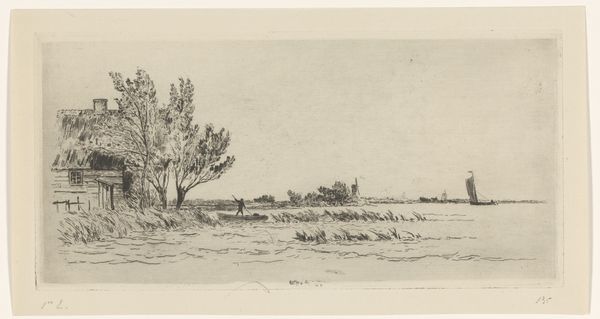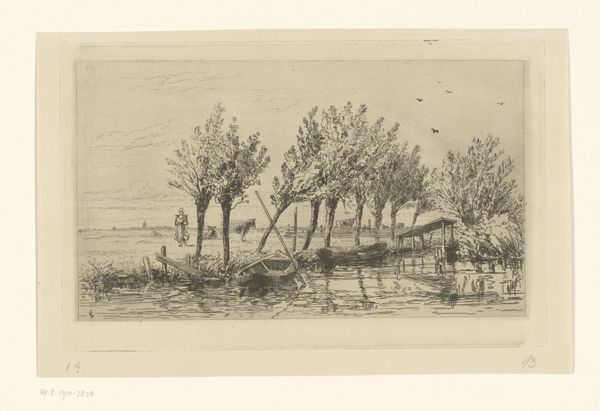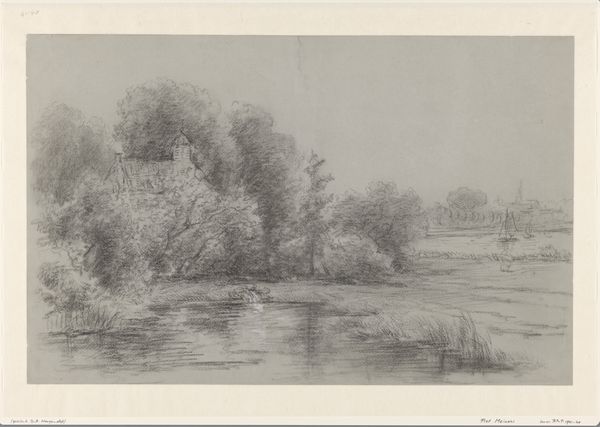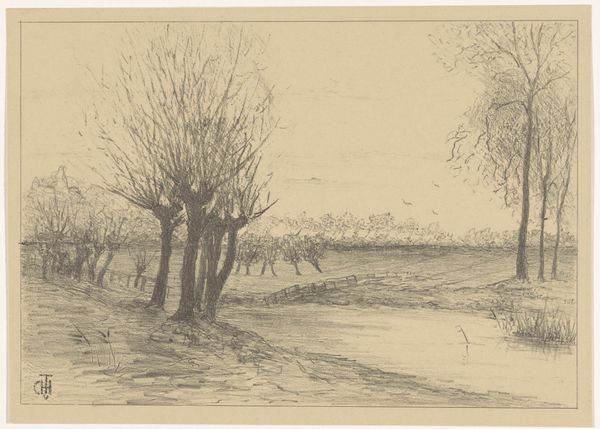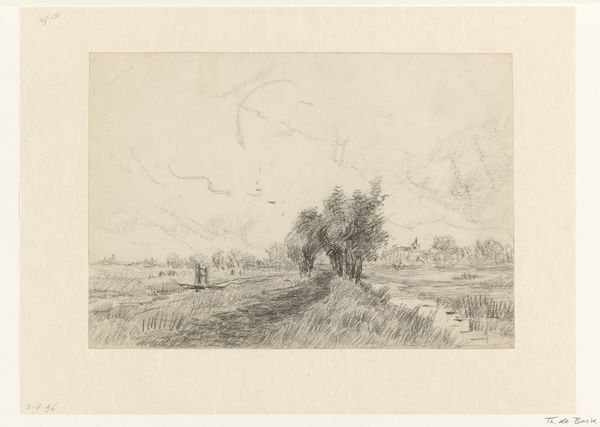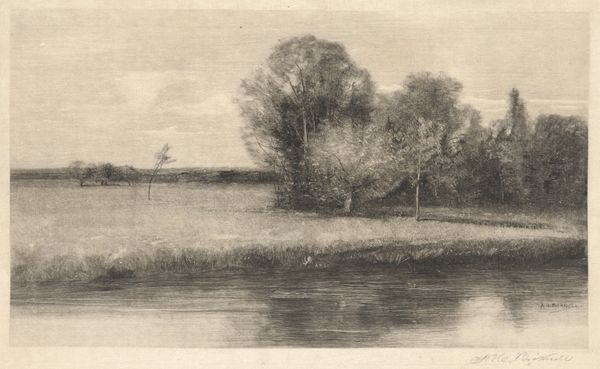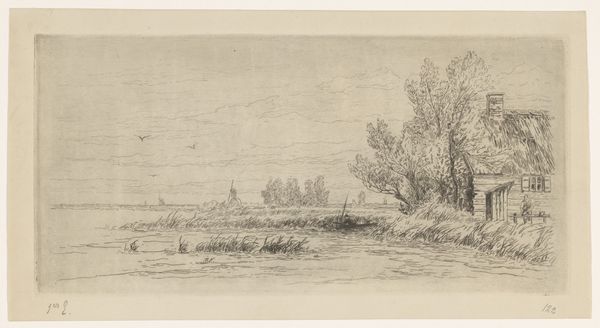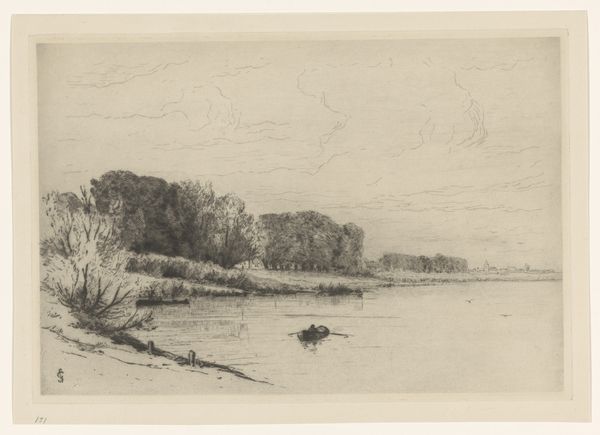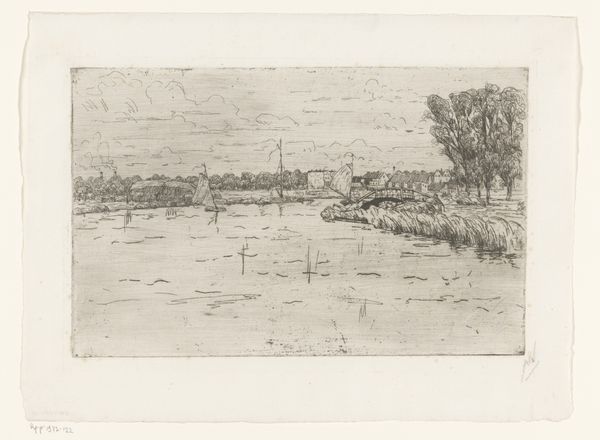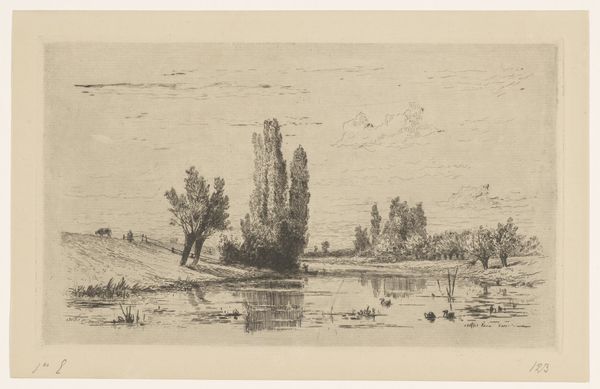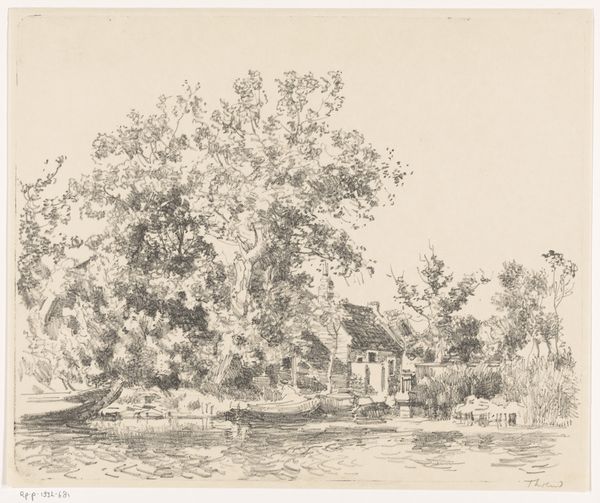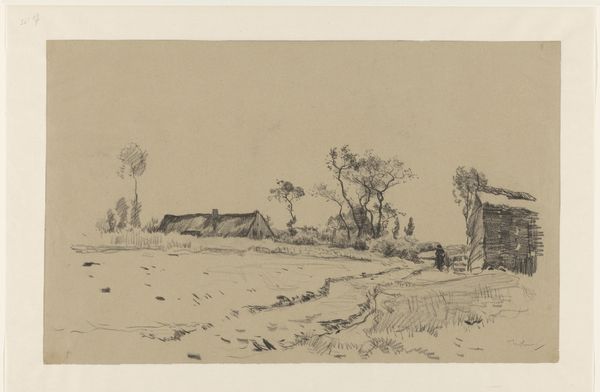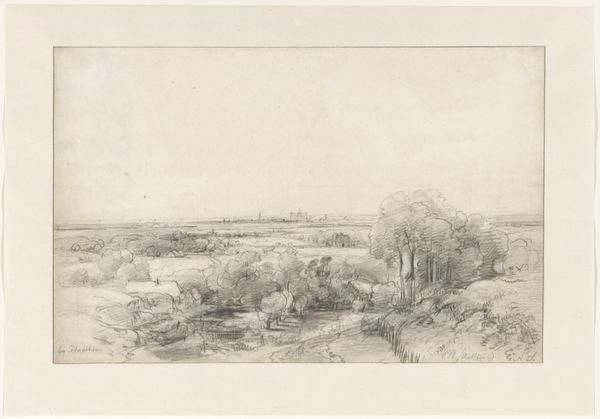
#
light pencil work
#
pen sketch
#
pencil sketch
#
incomplete sketchy
#
etching
#
personal sketchbook
#
ink drawing experimentation
#
pen-ink sketch
#
pen work
#
sketchbook drawing
Dimensions: height 311 mm, width 487 mm
Copyright: Rijks Museum: Open Domain
Editor: This delicate drawing, "Boerenwoning onder bomen aan een plas," or "Farmhouse under Trees by a Pond," attributed to Willem Roelofs and created sometime between 1832 and 1897, feels incredibly intimate, like a private glimpse into the artist’s sketchbook. The fleeting nature of light captured by the soft pencil work evokes a strong sense of nostalgia. What historical context shaped such serene depictions of the rural landscape during this era? Curator: It's interesting that you immediately sense that intimacy. Consider the mid-19th century Dutch art world, which was increasingly concerned with defining a national identity. Artists like Roelofs turned to the rural landscape not just for aesthetic beauty, but as a way of constructing an idea of Dutchness rooted in the land. Think of the socio-political forces at play: growing urban centers, industrialization, and a burgeoning sense of nationalism. Do you see how this seemingly simple sketch might become a statement about the value of the traditional Dutch way of life? Editor: So, while it seems like a purely observational drawing, it’s also participating in a larger conversation about Dutch identity during a time of change? Was there a specific audience or institution that fostered this kind of artistic nationalism? Curator: Absolutely. Museums and art societies played a pivotal role. They provided spaces for exhibiting and celebrating these landscape paintings, actively shaping public taste and promoting a specific vision of Dutch art. Can you imagine how an image like this, displayed prominently, might subtly reinforce a particular national narrative? Editor: I hadn’t considered that angle. It shifts the way I see the work – it's not just a pretty landscape; it’s a conscious effort to solidify a specific cultural narrative. Thank you for making this observation! Curator: It’s rewarding to see you make those connections. By thinking critically about the social and institutional forces surrounding the artwork, we move beyond appreciating aesthetics and truly understand its lasting relevance.
Comments
No comments
Be the first to comment and join the conversation on the ultimate creative platform.
